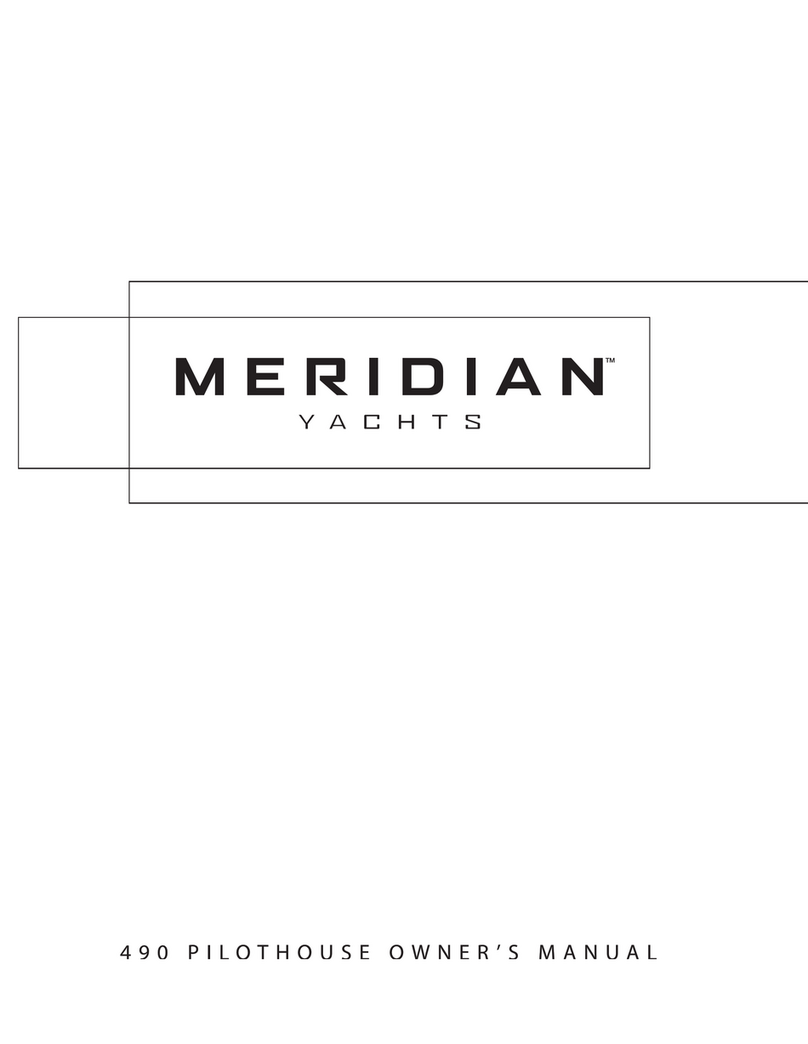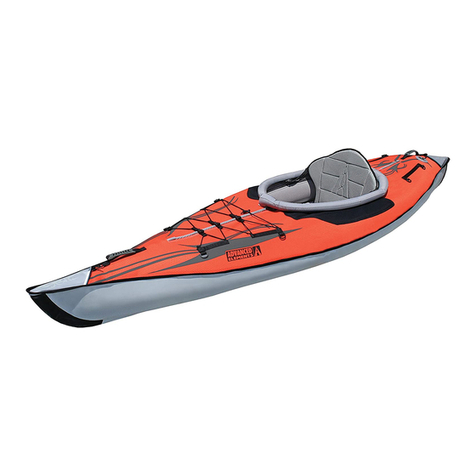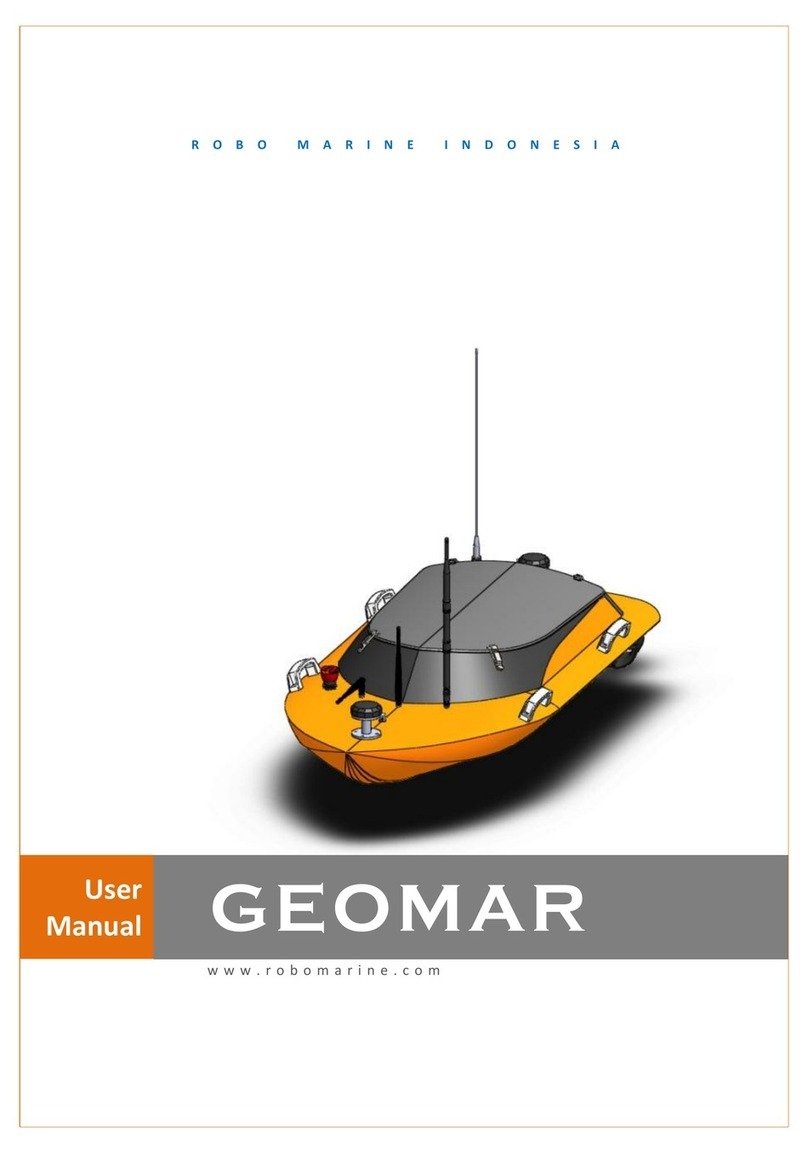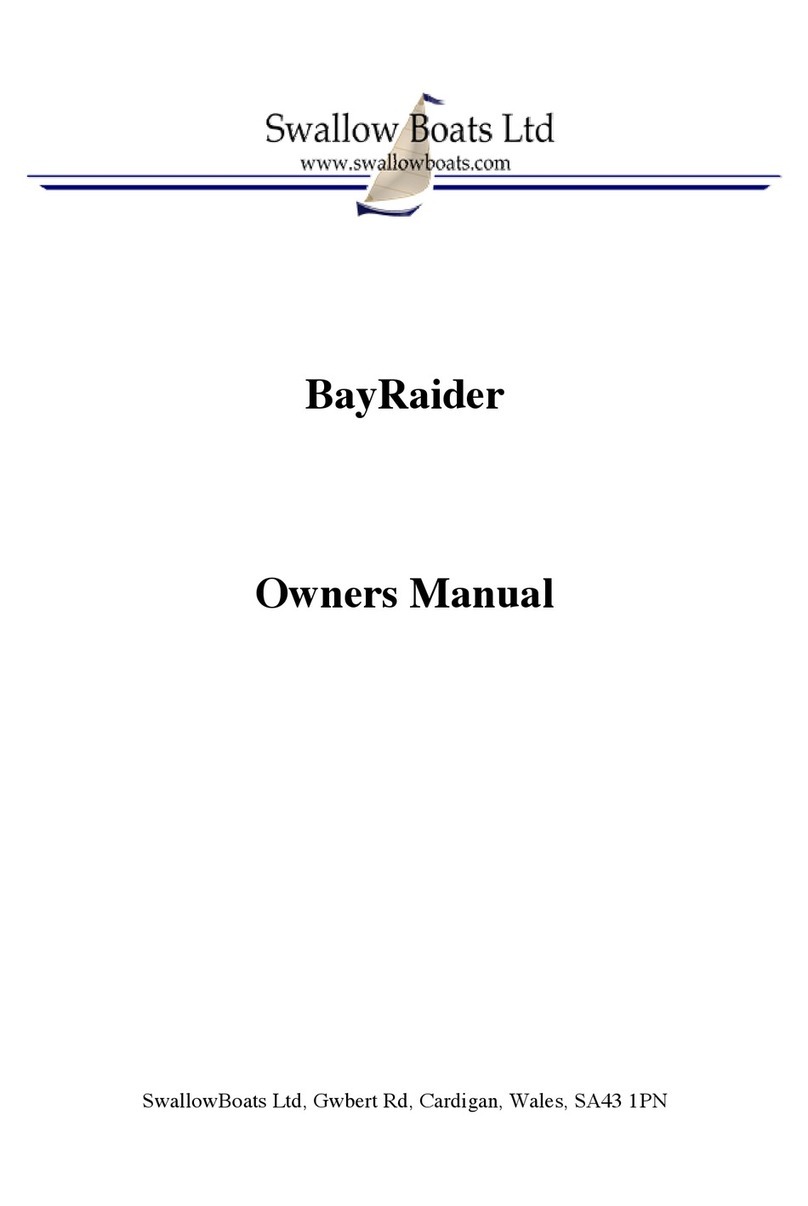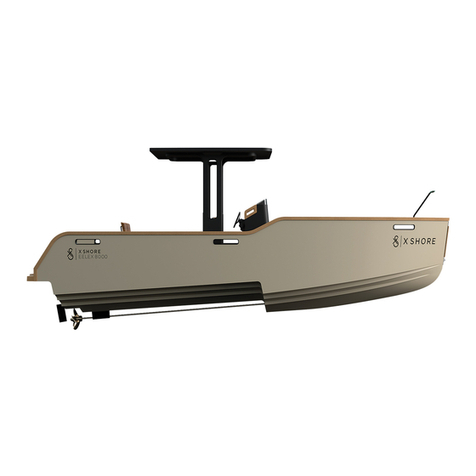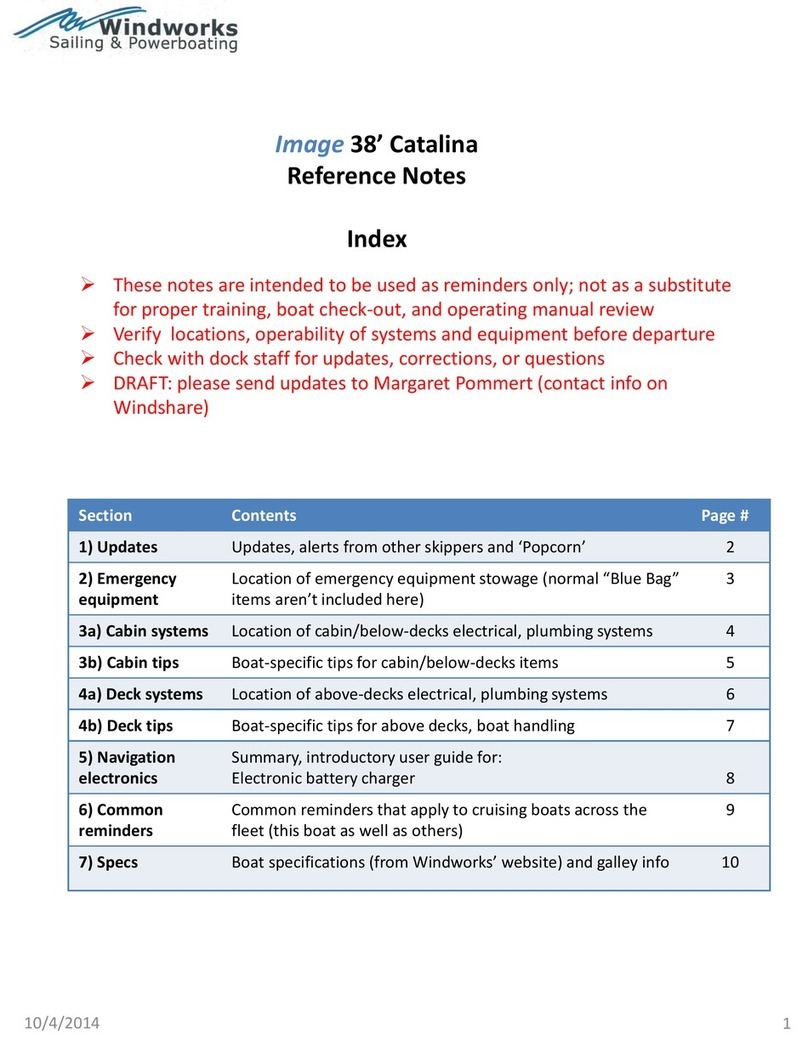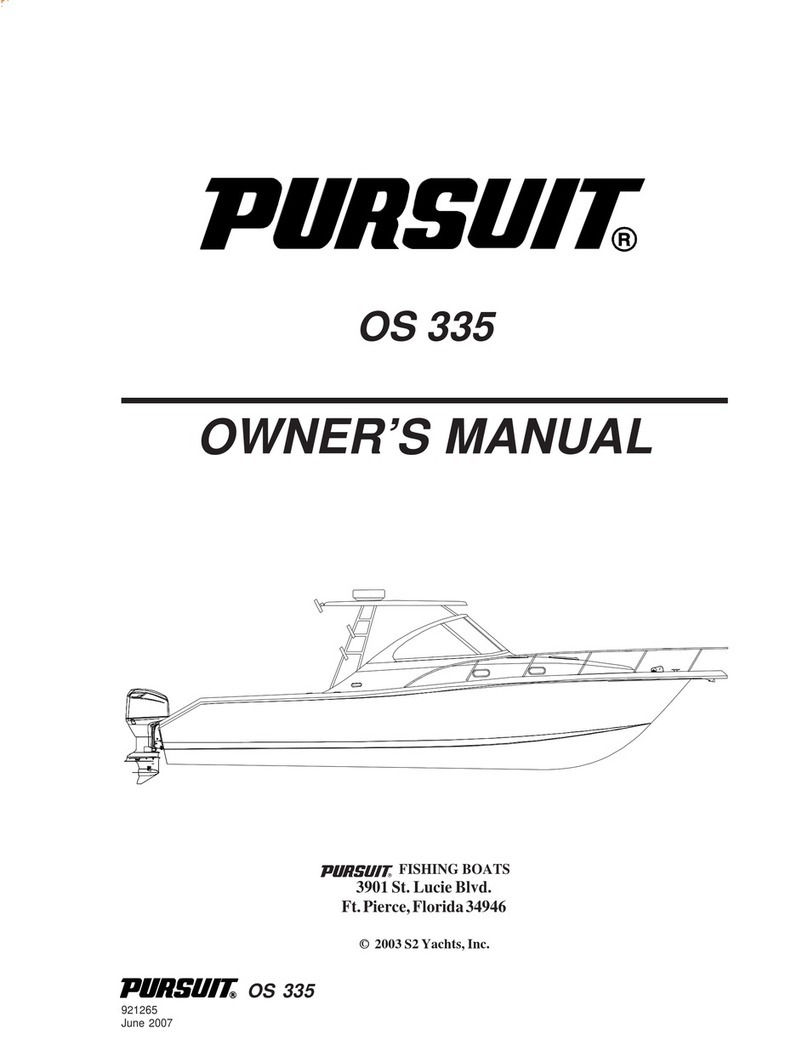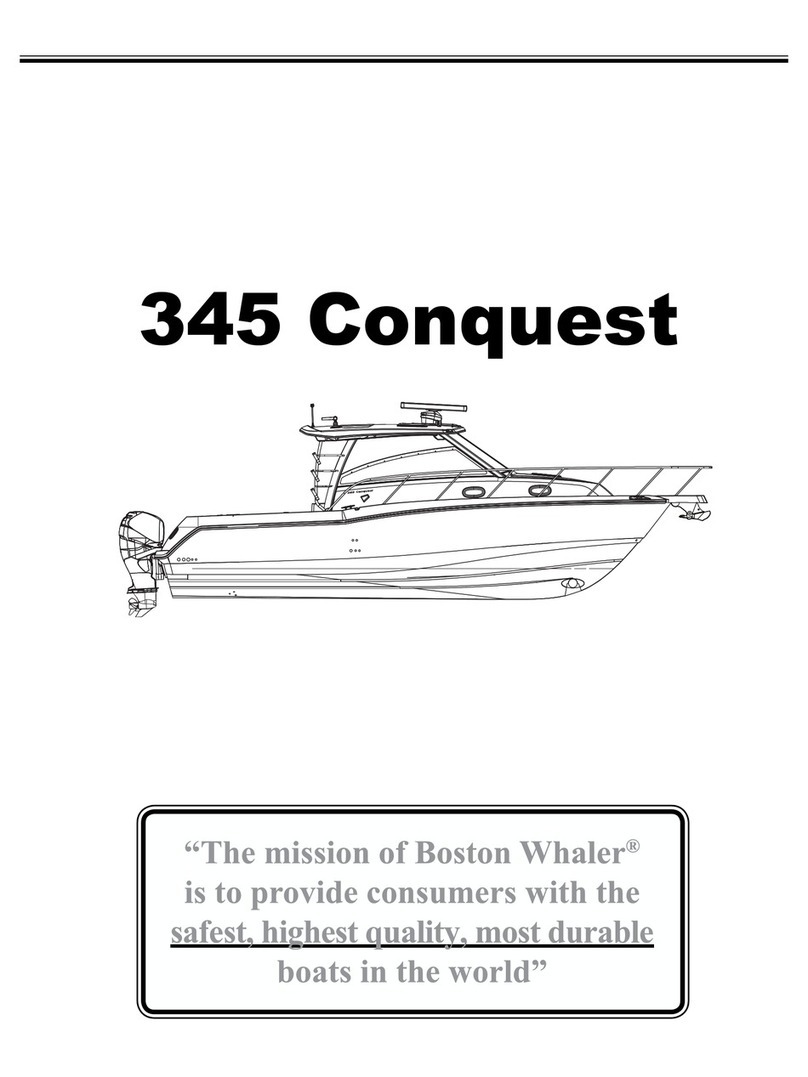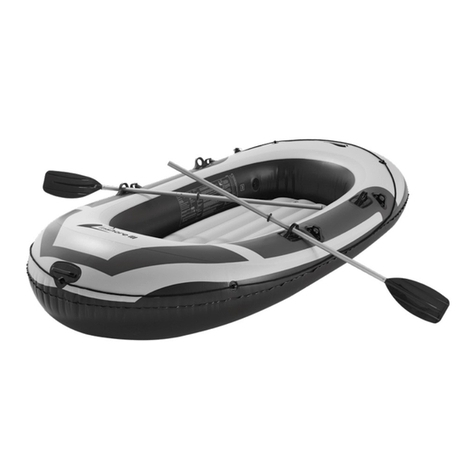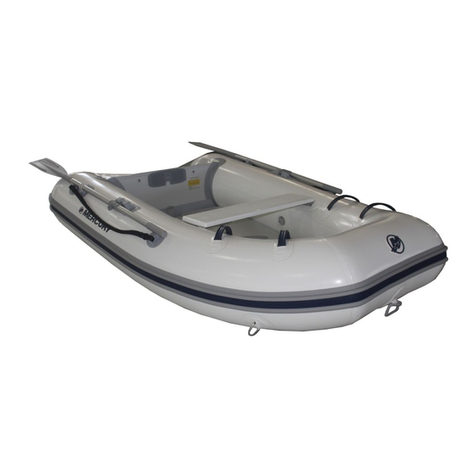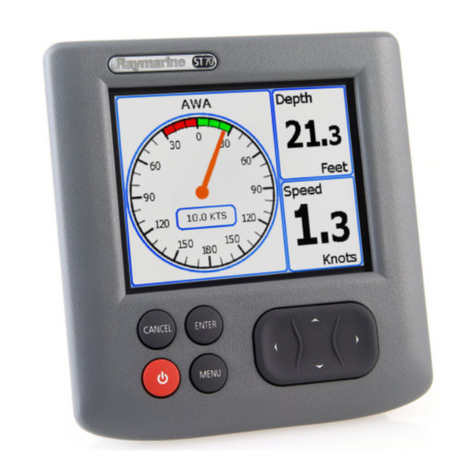ENGLISH 08-10-2010 Page 4/58 Tofinou 9.5
LATITUDE 46–- 17410 Saint Martin de Ré- Ile de Ré - (FRANCE)
INTRODUCTION
This manual has been produced to help you enjoy the use of your boat in complete safety. It
contains details of the boat, the equipment supplied or fitted, its systems and information about
their use. Read it carefully and familiarize yourself with the boat before using it. Even when your
boat is rated for them, the sea and wind conditions corresponding to design categories A, B and C
vary from strong gales to severe conditions, with risks of abnormal waves or gusts, and are
therefore dangerous conditions, where only a trained, experienced crew, in good condition,
handling a well-maintained boat, can sail in a satisfactory manner.
Ensure that forecast wind and sea conditions correspond to the design category of your boat, and
that you and your crew are capable of handling the boat in these conditions.
This Owner's Manual is not a course in sailing safety or seamanship. If this is your first boat, or
your are changing to a type of boat your are unfamiliar with, for your convenience and safety,
make sure you gain experience handling and using it before taking command. Your agent, your
national sailing or cruising federation or your yacht club will be happy to give you information
about sailing schools or qualified instructors in your area.
This Owner's Manual is not a detailed maintenance or repair guide. In the event of problems,
consult the boatbuilder or their representative.
Always employ the services of an experienced professional for maintenance or the fitting of
accessories. Modifications that could affect the characteristics of the boat must be assessed,
performed and documented by qualified personnel. The boatbuilder cannot be held responsible for
modifications made without their approval.
KEEP THIS MANUAL IN A SAFE PLACE AND PASS IT ON TO THE NEW OWNER IF
YOU SELL YOUR BOAT.
NOTICE: Our boats are regularly improved in the light of our customers’ experiences and
researched by the shipyard, and so the specifications given in this Owner’s Manual are not
contractually binding and may be changed without notice and without any obligation to update.
This manual is intended to cover as much information as possible, so certain equipment or
paragraphs might not apply to your boat. In case of doubt, please refer to the inventory which
should have been given to you by your agent when you placed your order.

